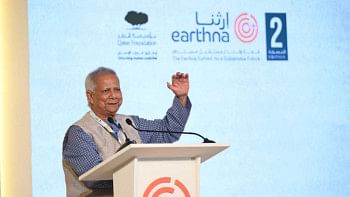Cotton use to expand
Cotton consumption in Bangladesh is expected to rise 4.91 percent year-on-year to 6.4 million bales this year due to higher demand from spinners and garment makers, according to the US Department of Agriculture.
The cotton year begins on August 1 and ends on July 31. Bangladesh is the largest cotton importer in the world at present, as China stopped importing the fibre in recent years. Bangladesh meets its demand for cotton through imports, as the country does not produce the white fibre locally.
Cotton traded between 70.5 and 72.5 cents a pound in international markets yesterday.
This cotton year, more than 430 spinning mills in Bangladesh will consume 6.4 million bales of cotton, according to USDA.
Bangladesh spends more than $3 billion to import cotton a year. One bale equals 480 pounds or 218kg.
Cotton consumption by Vietnam, a major competitor to Bangladesh in the global apparel business, will also increase this year for higher export of garments. In 2015-16, Bangladesh consumed 6.1 million bales of cotton. The import will also increase by 1.6 percent to 6.3 million bales in 2016-17 from 6.1 million bales last year, according to data from USDA.
India has become the biggest supplier of cotton for Bangladesh for competitive prices, quality and geographical proximity, as the country imports 50 percent of its total annual demand of the fibre from India.
Bangladeshi apparel makers are bagging greater export orders from international retailers as China is no more a competitive place for them for higher costs of production.
“Cotton consumption and import in Bangladesh are related to the export of garment items. Since garment exports are increasing, cotton consumption and imports will also increase,” said Mahmud Hasan Khan, vice president of Bangladesh Garment Manufacturers and Exporters Association.
More than 80 percent of Bangladeshi apparel products are cotton-based, said Khan, who is also a cotton importer and spinner. The rest 20 percent include viscose, polyester and other materials. Currently, local spinners can supply nearly 90 percent of raw materials for the knitwear and 40 percent for the woven sector.
For 2016-17, global production and beginning stocks are high, the USDA said. Global trade and yearend stocks will also increase. Production and yearend stock of cotton increased in the US, although its consumption and exports remained unchanged in the country.

 For all latest news, follow The Daily Star's Google News channel.
For all latest news, follow The Daily Star's Google News channel. 



Comments